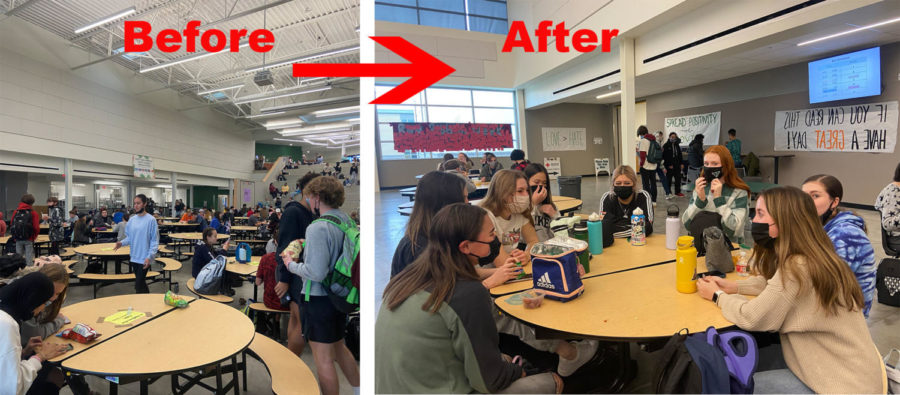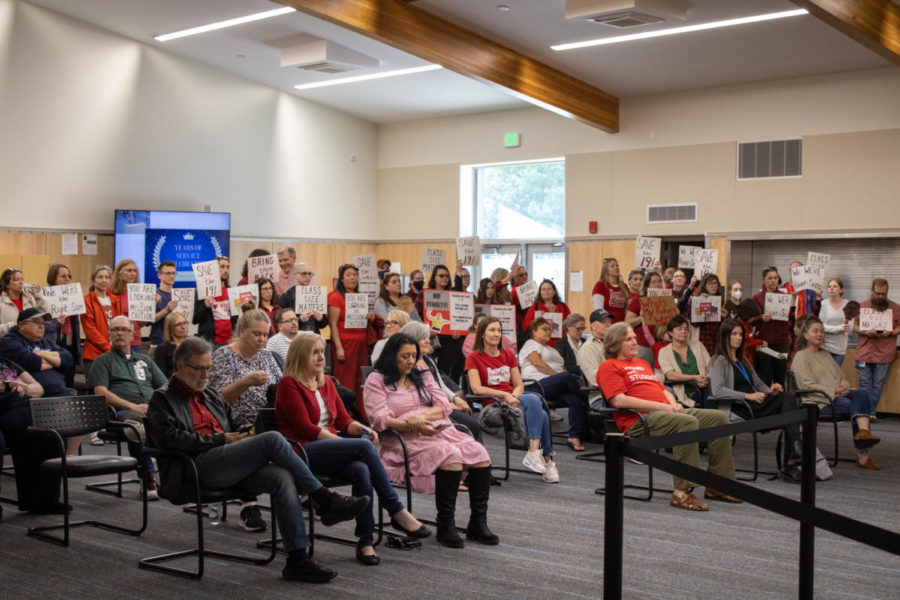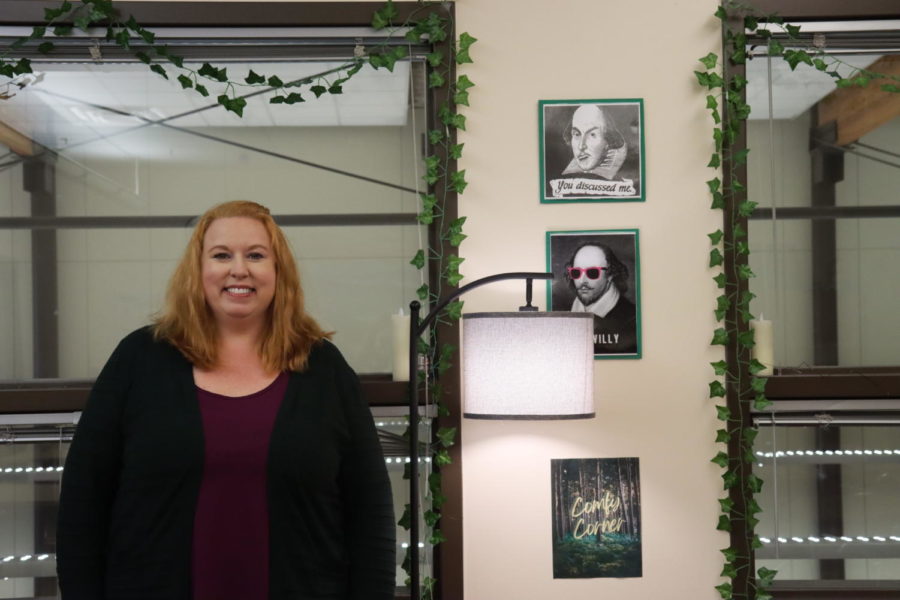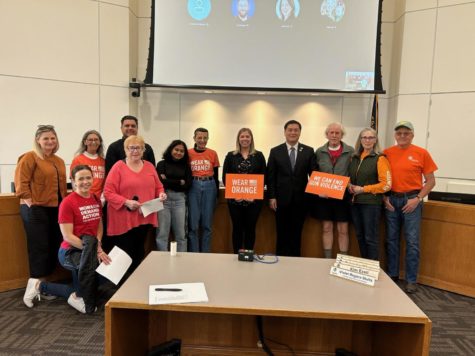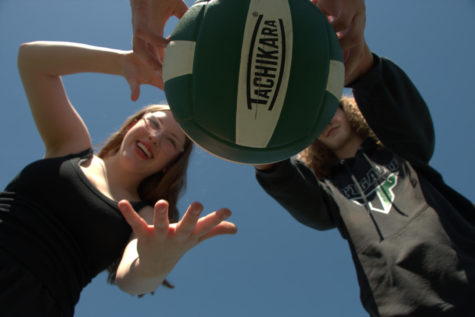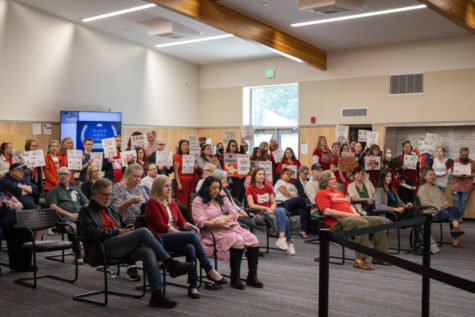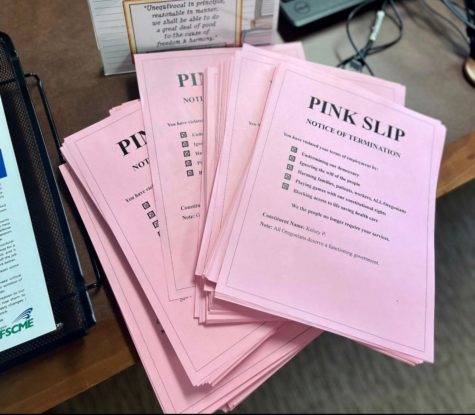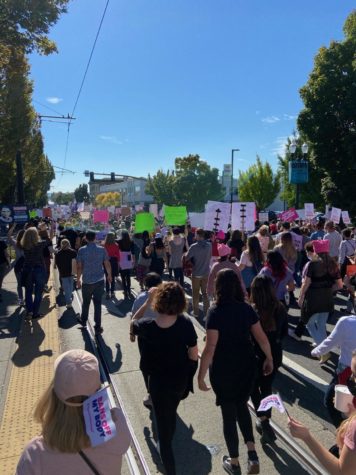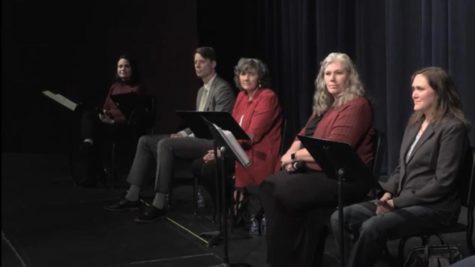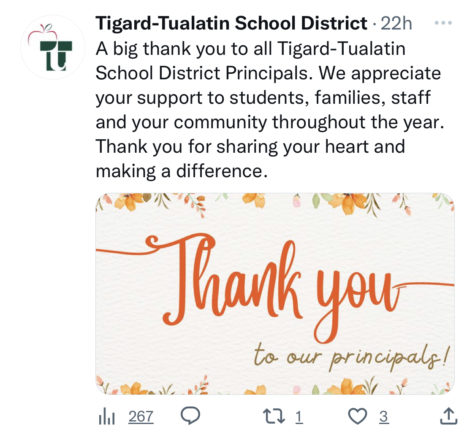The talk around the table
COVID-19 pandemic shakes up lunchroom policy
Sophomores Natalie Church, Kiki Allen, Sienna Johnson, Flannery Mendenhall, Chira Ahmed, Caroline Johnson, Madelyn Feeney, Madeleine Joule sit together at one lunch table on Nov. 18. after the four per table restriction was lifted. In the before shot signs taped to the tables instructed students to spread out.
November 18, 2021
Returning to school amidst a global pandemic has changed much of school as students previously remember, including lunch.
Initially, students were required to sit four to a table and six feet apart at lunch to prevent the spread and contraction of COVID-19. While the virus still remains a concern, the start of the new quarter on Nov. 15 ushered in change from three lunches to only two and has eliminated the initial rule all together.
Tigard Principal Brian Bailey explained that without any COVID outbreaks in our school, keeping three lunches and strict lunch regulations is no longer necessary. In addition, the second lunch splitting up the third block was a significant disruption for many classes.
Bailey said administration looked to other schools within the district before making the change. Tualatin High School is the most similar in size to Tigard, but it had managed to start with the traditional two lunch periods. TuHS had also not had any major outbreaks or cases for concern despite lighter regulations.
While some students at Tigard shared indifference about the initial rule, others had strong negative feelings regarding the topic. Students expressed opinions that the lunch rule was never well regulated by staff, and in turn was somewhat unfair.
“I always [saw] a bunch of tables with six to eight people at them,” sophomore Tony Arreola said. “But when my table [had] one extra person it [became a] problem. People [constantly walked] around in large groups with their masks down while eating,” he added. “[It was just] unfair.”
Student opinions aside, Associate Principal Tyler Davila explained that administration had minimal right to decision-making in regards to the regulations in place.
“I didn’t decide what I think [was] safe, we didn’t sit down with the administrative team and determine what we felt like would meet guidelines,” Davila explained. “[We followed] what we were told by the state.”
The Oregon Department of Education (ODE) had stated that while eating lunch without masks, students are to remain six feet apart. Whether or not these guidelines have been updated was hard to determine in an internet search. However with some resistance, it was difficult holding students to the four to a table rule and staying six feet apart.
“If you went out there and measured, [it] probably [wasn’t] even six feet,” Davilla admitted. “[We did] our best to maintain that, and that’s part of the reason [we did] the four people per table.”
As soon as students have finished eating, they are required to put masks back on immediately. Such guidelines are still in place to lessen the spread of COVID-19, and in turn keep students safe enough to remain in the building.
While ODE requirements applied to all schools in Oregon, building size and student population differentiated the way schools all over the state operate during lunches. Schools had to take the rules and interpret them fit their circumstances.
Students at Tualatin High School expressed that they too were encouraged to sit four to a table, six feet apart in the cafeteria. Even so, some say the regulations were difficult for students to follow.
“Most students [were] good about the masks but social distancing is not well maintained,” one freshman at Tualatin said. “At lunch I would estimate the majority of people [were] two feet away from each other when unmasked.”
To prevent overcrowding in their cafeteria, Tualatin students say that their school did their best to offer a suitable amount of seating to students.
“About five to ten kids [ate] and [studied] at tables in the library which [were] usually about one person per table [and] spaced out a lot,” Tualatin student, freshman Kayla Vo said.
Other students said Tualatin also offers ample outdoor seating, but similarly to Tigard, students have become less willing to eat in the cold.
However, students were not solely to blame for the problems that have arisen with the lunch rule. Limited space at Tigard has exacerbated the issue of keeping students apart during lunch, and proved to be one of the largest issues about the rule.
Apart from the cafeteria, students were permitted to eat at arms length distance on the learning stairs in the commons, and outside in the courtyard. But similar to other schools, as the weather got colder, more and more students crowded in the cafeteria. Originally, this posed a question as to how lunches would look in winter months.
“We’re going to have to look for other options as it gets colder,” Davila initially stated. “[We] certainly [don’t have] the capacity to have everyone in the commons [once] taking away those outdoor eating areas.”
COVID-19 leaves for some uncertainty, as things are expected to change often. As for right now, students are simply asked to continue wearing masks when not eating at lunch, and maintain flexibility with any changes to come.


